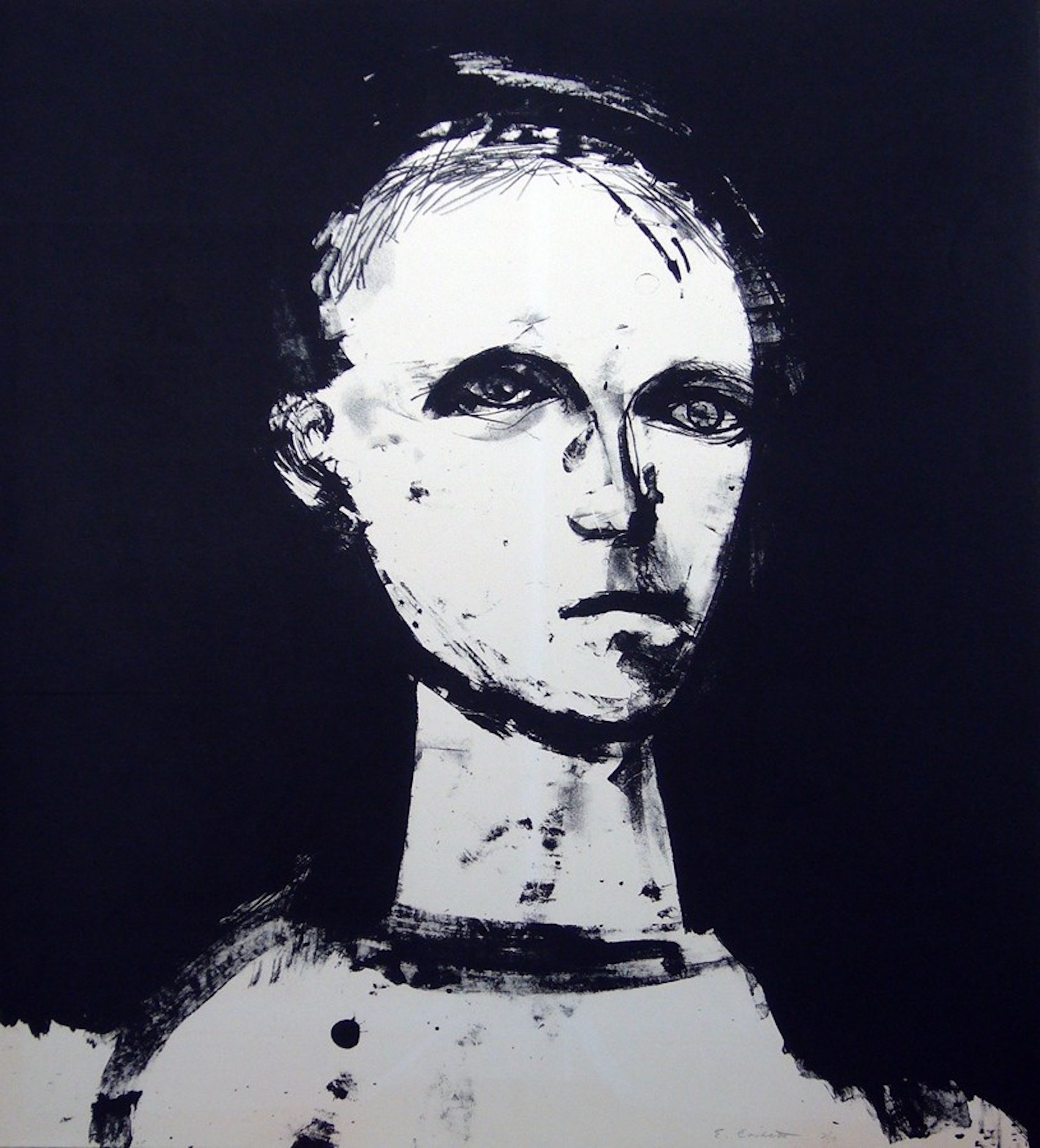April 7 – May 8, 2021
About:
This exhibition was curated by students in the Spring 2021 Bucknell course, “Museums & Contemporary Curating,” taught by Samek Art Museum director Richard Rinehart and teaching assistant Rachel Martine. The artworks were selected from the Samek Art Museum’s collection for this student collaboration and final class project.
Curatorial Text:
Expressions: The Body Now
The vulnerability of the body is something that humans struggle with every day, and the expectations for what a body should look like have changed immensely over time. This exhibition highlights how the physical body evokes mental sensations and immerses the viewer in a sea of emotions induced by both facial expression and body language. You will see works that embody both the physical and mental challenges faced by our society and how these relate to past, present and future representations of people.
How might you view these works in the context of today? Does the body say more than the face can? How have your perceptions of the human body changed over this last year- when it has been harder than ever to see others? We hope that this exhibition will help you think critically about these questions, and internalize the importance of physical expression.
Exhibited Works:
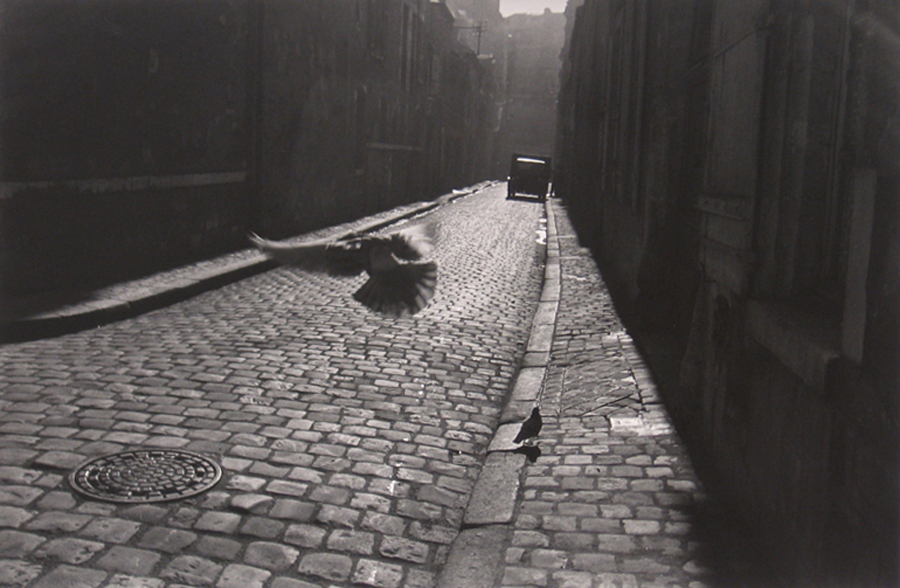 | Elliott Erwitt Pigeon in Cobbled Street, 1952 Photograph, Gelatin silver print on paper Gift of Mr. Wallace Richman 1981.3.12 Pigeon in Cobbled Street was taken by Elliott Erwitt who has been described as a master of capturing “minor occurrences”. With so much emphasis on the physical body, this photograph shows what life is like when there is not a body in the space. While a lack of a human body might seem empty to some, how do you see it? Is it devoid of life, or does it show you how free we all are? – Will Woods, Economics, Class of 2021 |
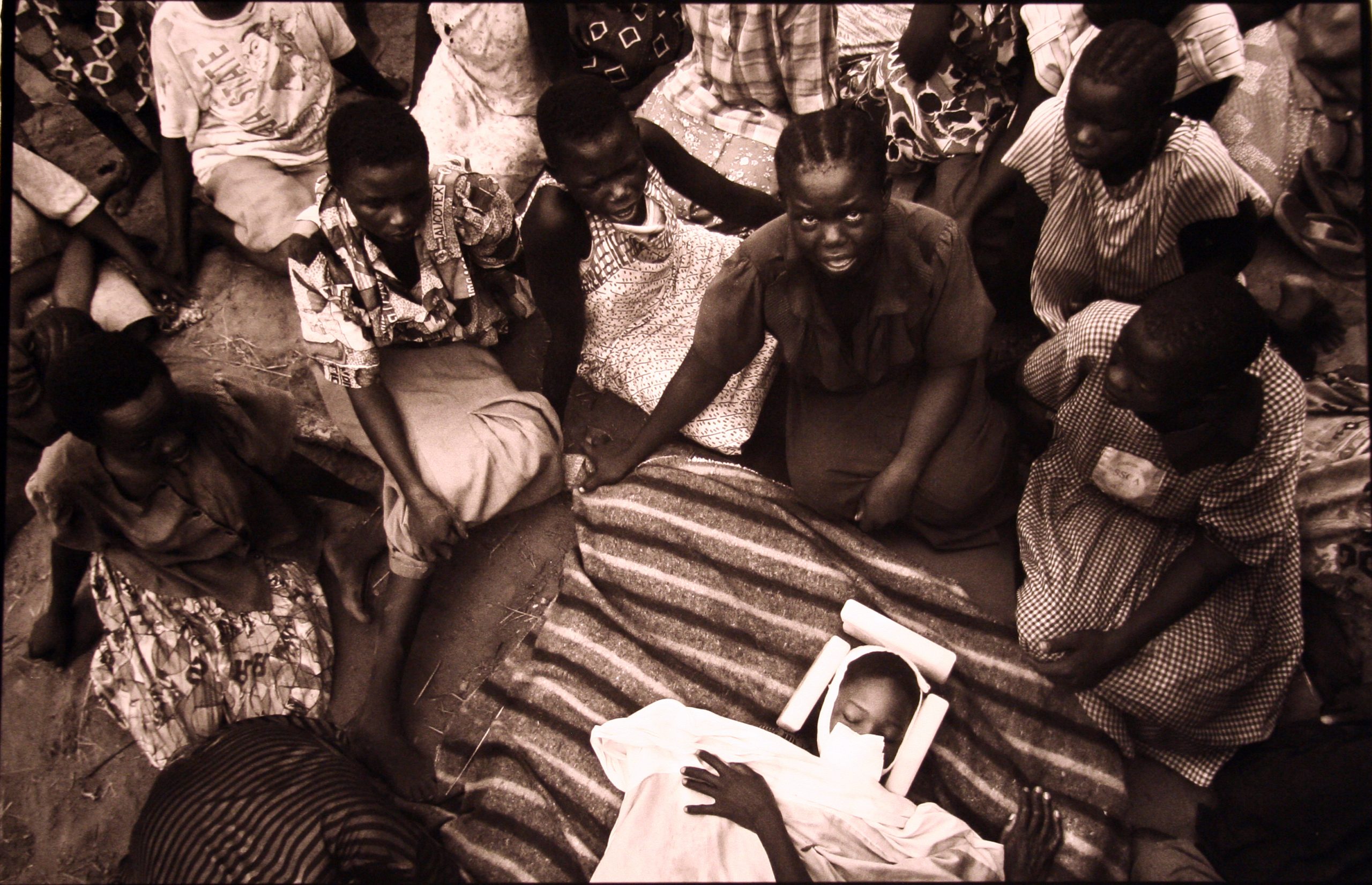 | Ryan Spencer Reed Southern Sudan, 2003 Photograph, Digital Print on paper University Purchase with funds from the David Burpee endowment 2007.18.4 Southern Sudan was taken by Ryan Spencer Reed, a photographer known for capturing social issues in East Africa. Pain, anguish, and suffering all things that every human being has experienced in their lives, especially during this past year. This photograph brings all of these emotions together in a single, still image, showing how a very temporary moment can be so painful not just for a single individual, but for a whole community. – Will Woods, Economics, Class of 2021 |
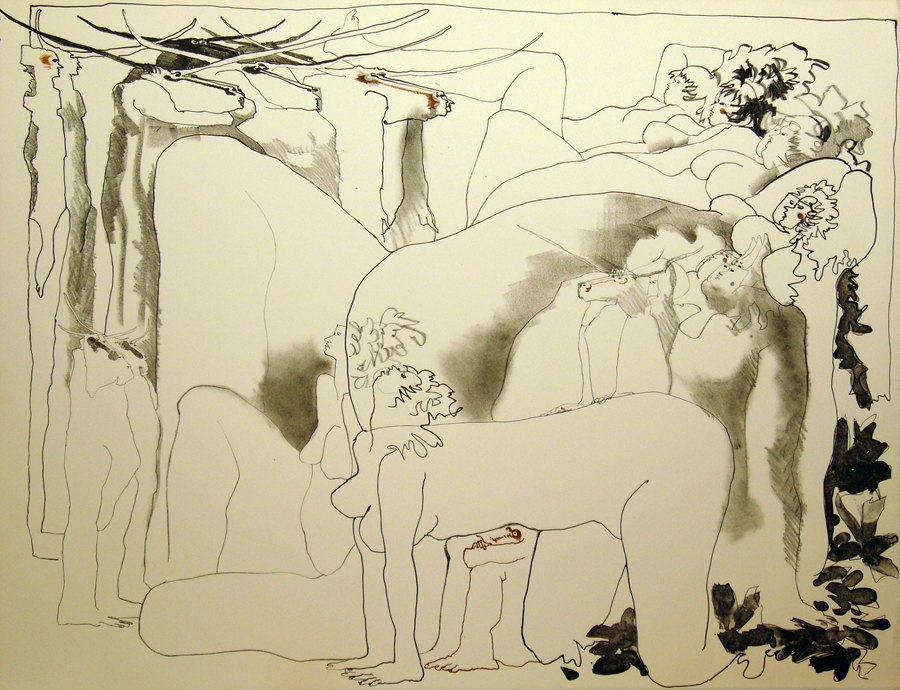 | Joseph Pla-Norbana Act II, 1969 Lithograph on paper 1991.16.53 Josep Pla-Norbana was born in 1928 and raised in Barcelona by his uncles after his parents died when he was young. He quickly got into drawing and became a well-known artist in Spain. Joseph is known for his very creative abstract art that manipulated the human body in a profound number of ways to create aesthetically pleasing but also mentally challenging artwork. Act II provides another look into his mind and the creativity of the body. He challenges what the body should look like and act like and leaves the viewer in deep thought. – Yusef Chisholm, Business Analytics, Class of 2022 |
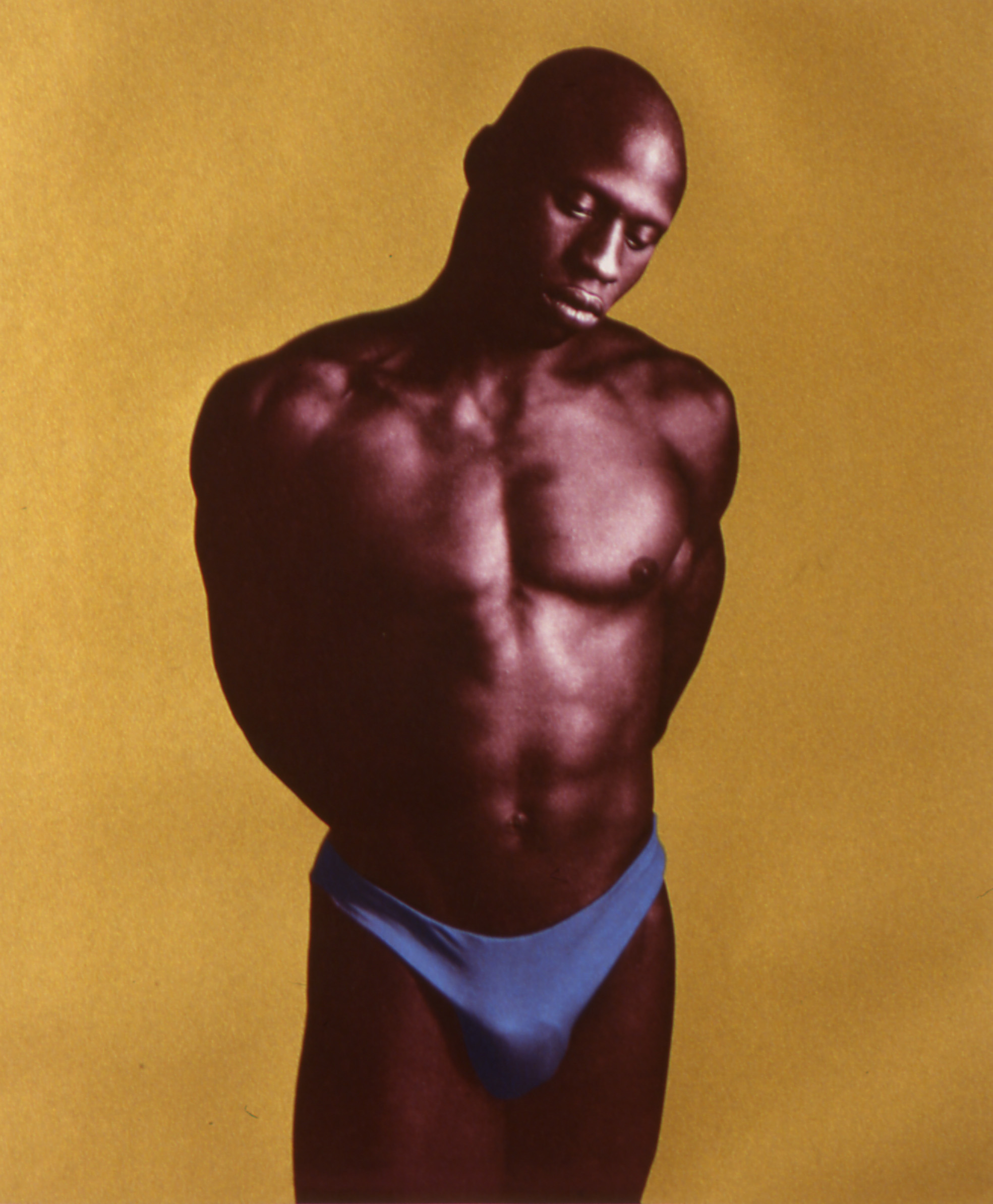 | Robert Mapplethorpe Ken Moody (Nude with Yellow Background), 1985 Color photogravure and silkscreen on paper 1986.9.1 Robert Mapplethorpe grew up in Queens, NY, and spent his career shooting film photography. Usually, in black and white film, Mapplethorpe was obsessed with the body and capturing intense and thought-provoking pieces. In one of his few color shots, he photographs an intimate model, Ken Moody, and his fit body. The expression of his face and the color contrast all leads to questions that will only be answered by each viewer. – Yusef Chisholm, Business Analytics, Class of 2022 |
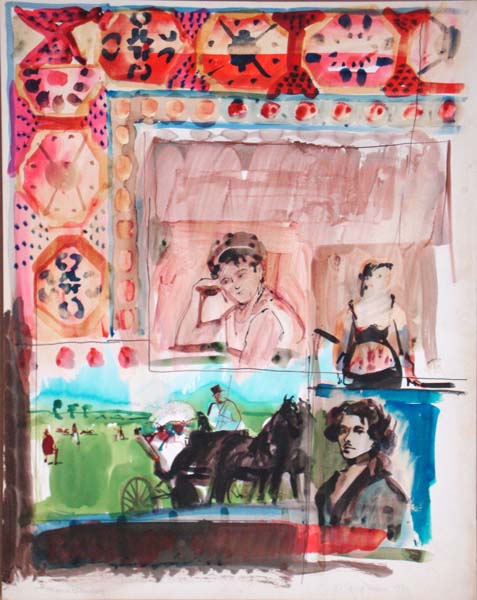 | George Deem French Drawing, 1970 Ink and watercolor on Bainbridge board Gift of the Estate of George Deem 2014.4.5 George Deem’s French Drawing was chosen for this exhibit as it showcases deep emotion through different facial expressions. This relates to Expressions: The Body Now as it depicts different states of isolation. This work emphasizes the free-flowing thematic choices that Deem was known for. – Josie Lippincott, Interdepartmental Major, Class of 2022 |
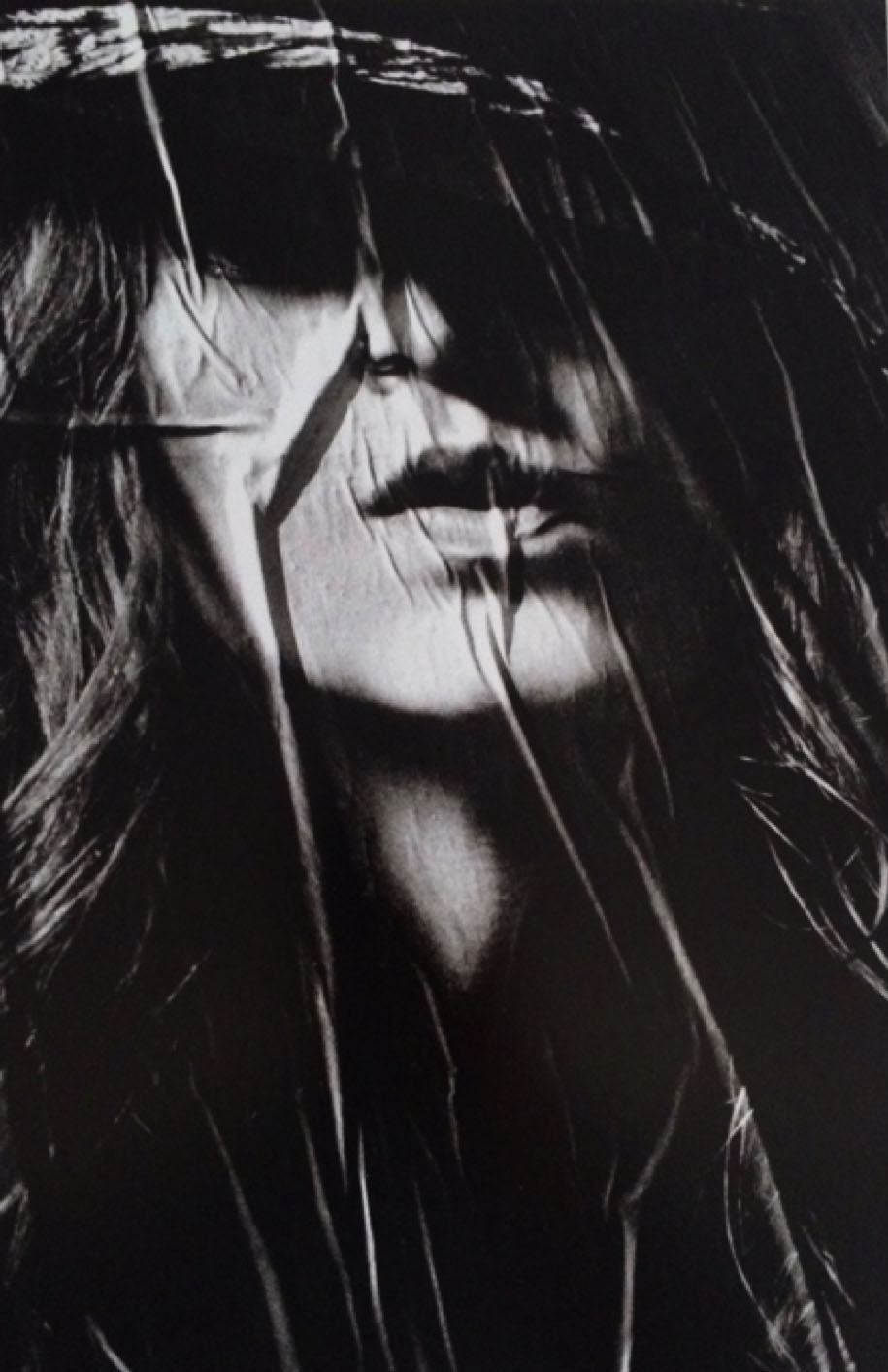 | Ralph Gibson Untitled, 2013 Photograph 2015.2.6 Ralph Gibson’s Untitled is refreshing in the time of a pandemic. The bottom half of this woman’s face creates a sense of unfamiliarity. The dramatic photograph highlights the impact of the pandemic on the emotional self and emphasizes isolation. This work emphasizes the mysterious undertones and narrative that Gibson’s photographs are known for. – Josie Lippincott, Interdepartmental Major, Class of 2022 |
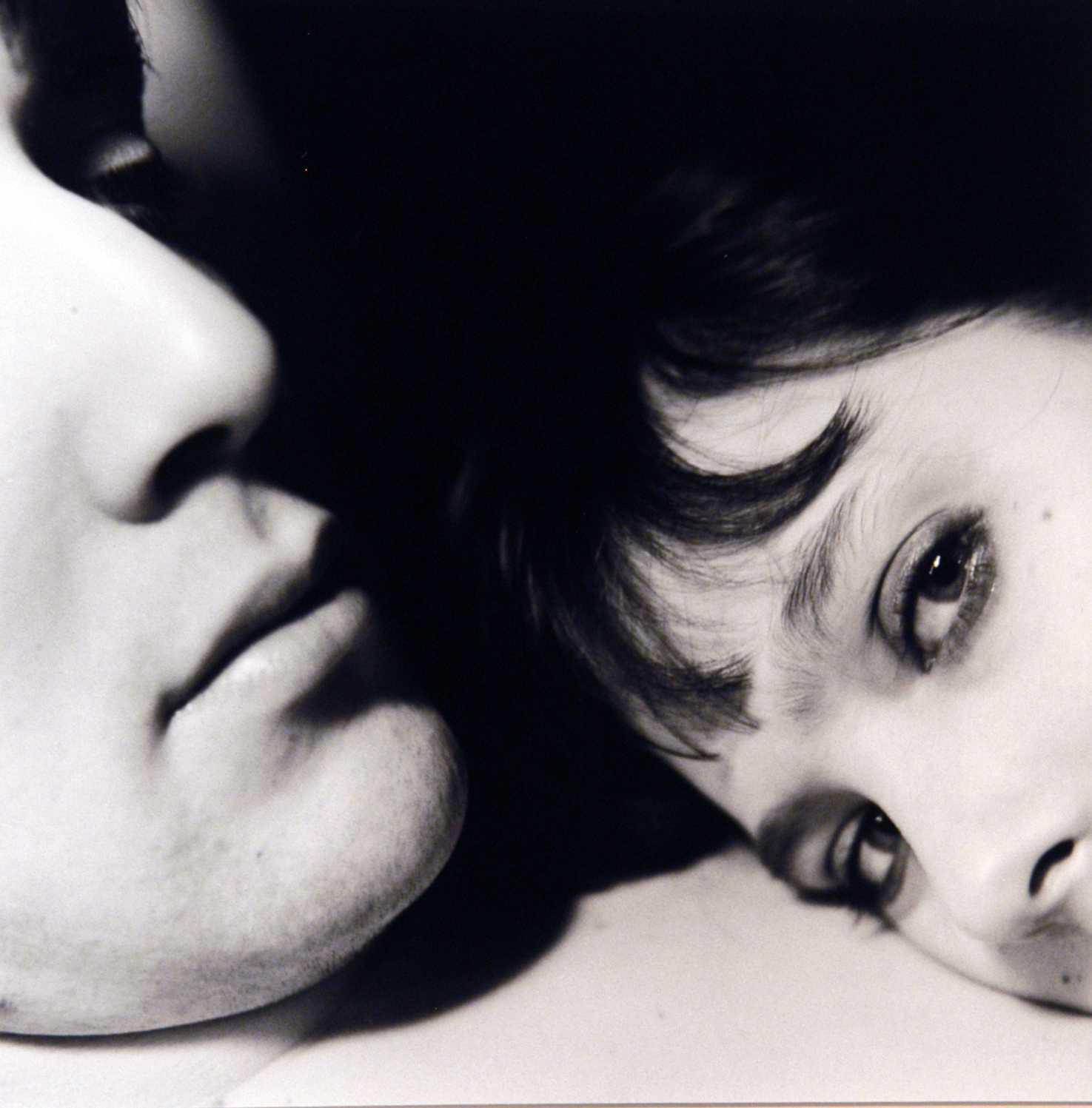 | Jenny Lynn Two Faces, 1988 Gelatin silver print on paper Gift of Pradeep K. Jain 2003.9.3 The black and white coloration of this photograph brings upon an eerie mood. One can see the series looks upon both of the peoples faces. In the past one has been able to examine an entire face, but now with masks people are mostly restricted to just the eyes. This provides a good comparison of the before and after, where one can examine the mouth (before), and the eyes (after). – Isabelle DeZenzo, Biology & Psychology, Class of 2021 |
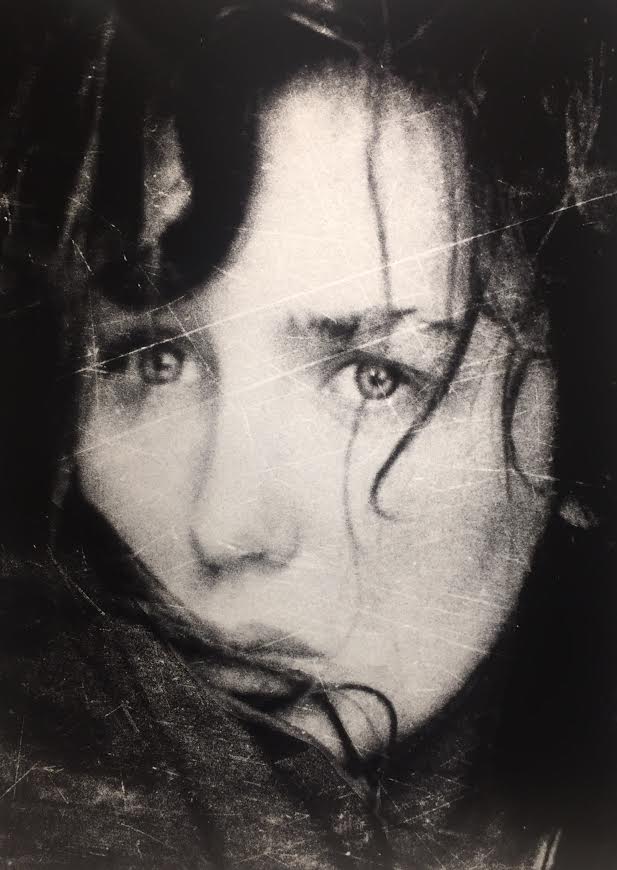 | David Seltzer Oncoming Storm, 1992 (Capture date) 2014 (Print date) Archival Pigment Print 2016.11.16 The black and white setting of this photograph creates a more serious tone for the photo. One can examine the expression of this woman’s face very clearly. Now in the era of masks expressions are covered up. Here a person can look at the picture, and evaluate the emotion she is expressing, a concept that is now foreign to us. – Isabelle DeZenzo, Biology & Psychology, Class of 2021 |
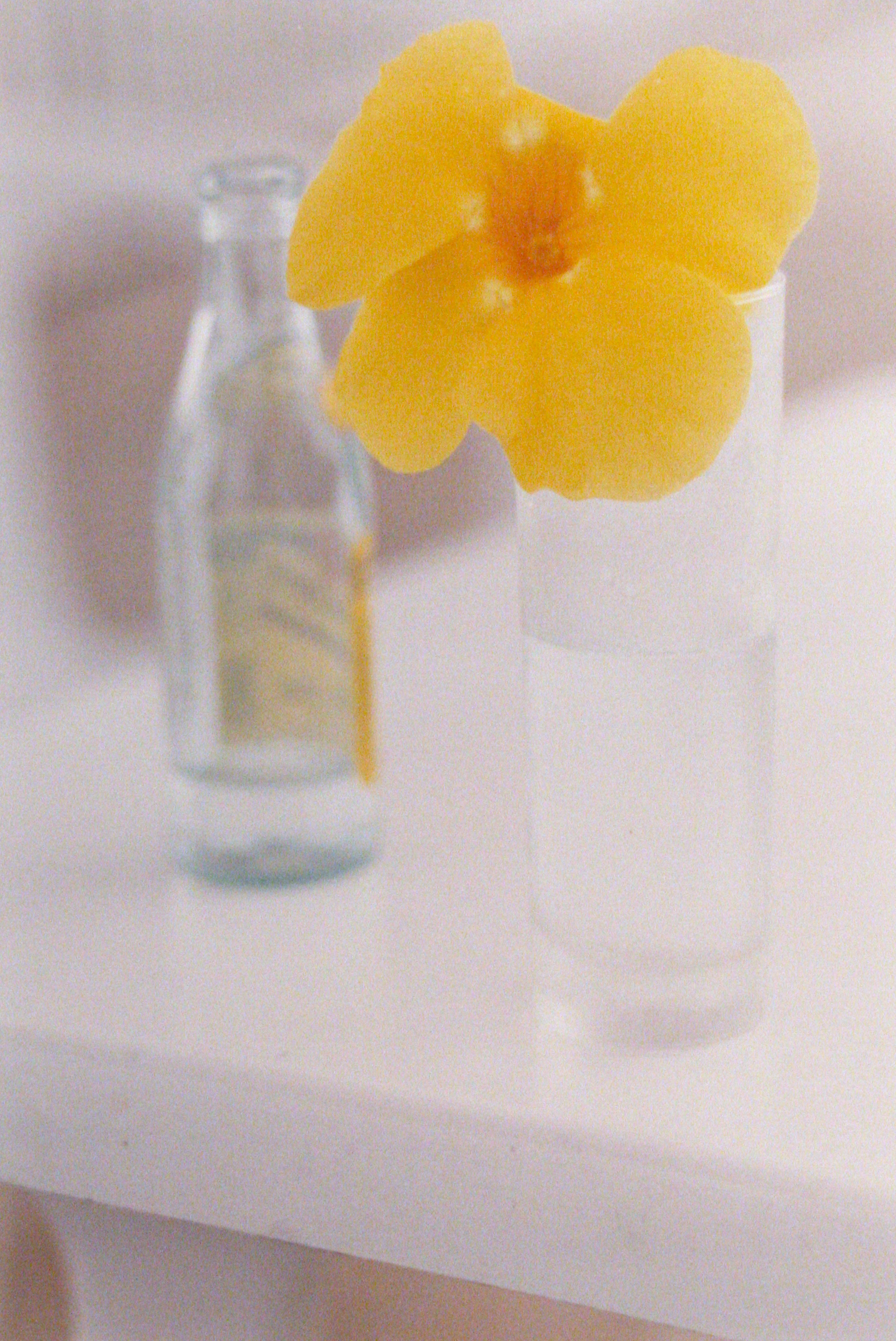 | Ralph Gibson Untitled (Yellow Flower), 1992 Chromogenic photographic print on paper 2008.90.34 This piece emphasizes the flower and it’s solitude. The flower in the picture begins as a vibrant yellow which then ultimately changes with the withering of the flower, loosing its color, leading to death. This symbolizing the toll solitude/loneliness has on our bodies and minds. While we may not be dead, it almost feels like it as we go through our monotonous lives during this pandemic. – Ian Heinicke, Anthropology, Class of 2024 |
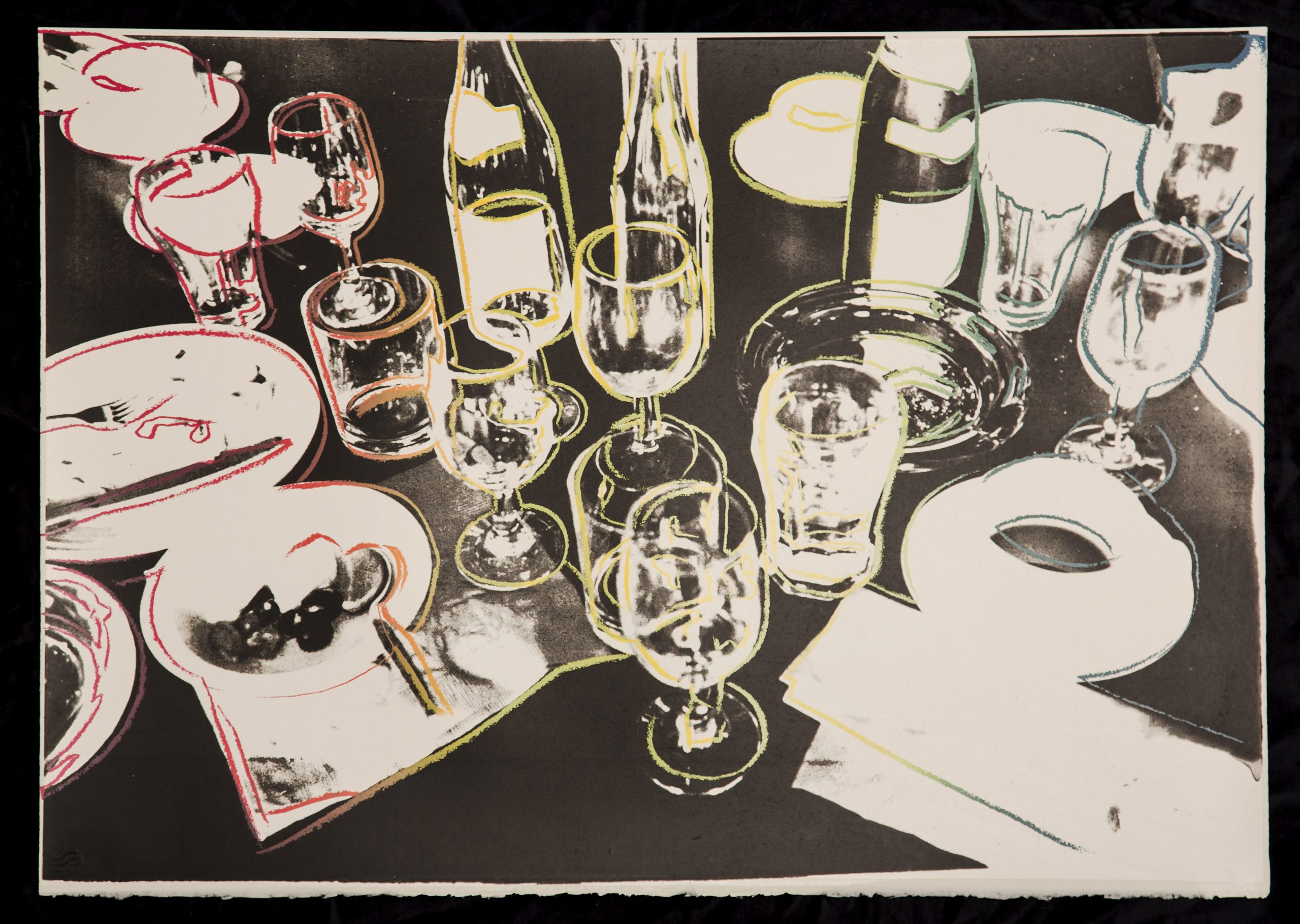 | Andy Warhol After the Party, 1979 Screen print on Arches 88 paper 2014.1.4 This piece of pop art depicts silverware, glasses, and alcohol which can be seen as a party. But it resonates with us as it’s something we’ve lost with the start of the new decade due to social gatherings being banned or limited. Culminating in our minds and bodies to almost crave social interaction and push ourselves to return to normalcy. – Ian Heinicke, Anthropology, Class of 2024 |
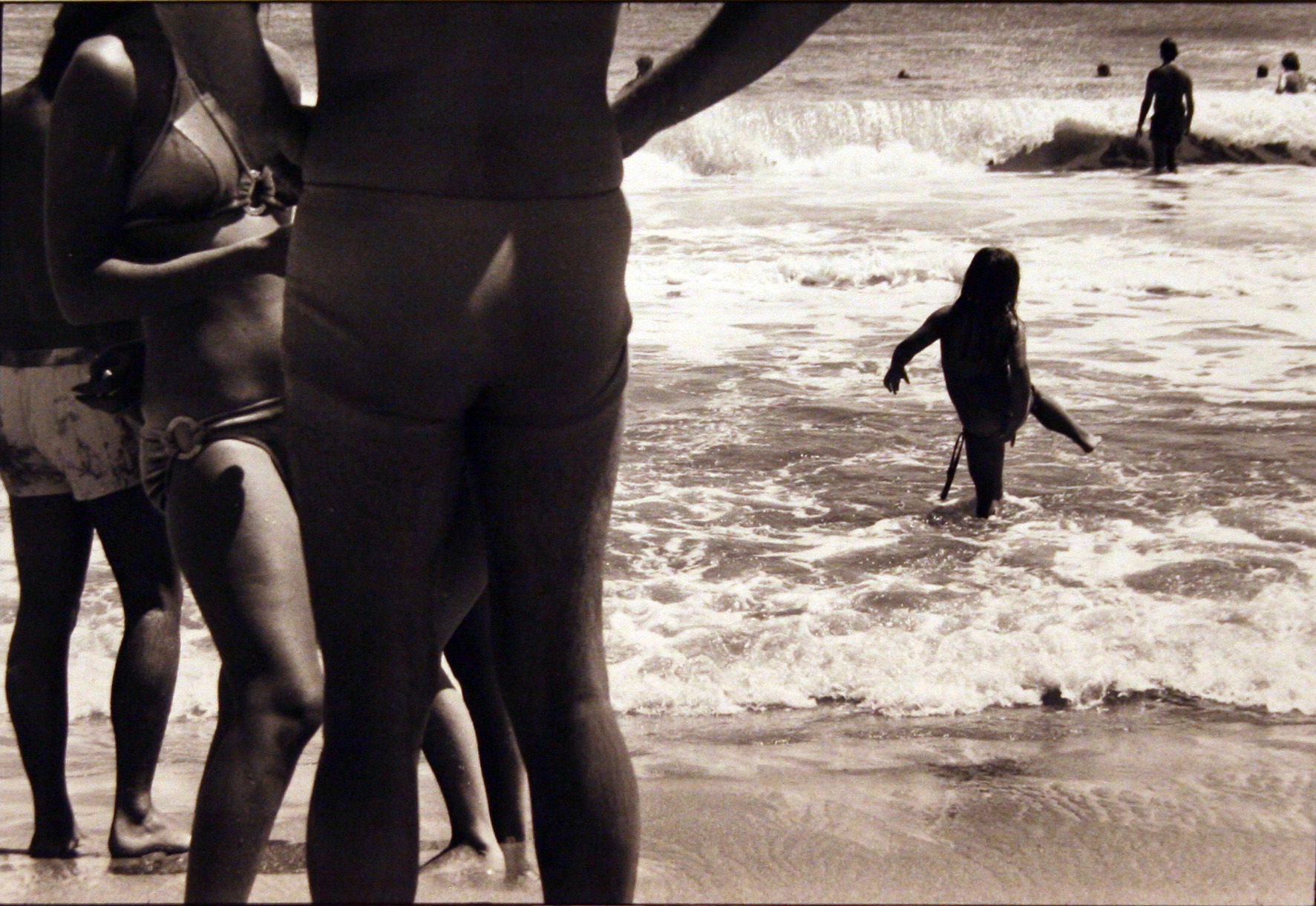 | Elliott Erwitt Untitled, 20th century Gelatin silver print on paper Gift of Eleanor Bluestone 1983.12.1.3 Depicting numerous individuals gathered together, this photo perfectly captures the freedoms of pre-pandemic life. With COVID related restrictions, people can no longer gather in the same carefree ways they used to. – Noa Evenhaim, Political Science, Class of 2021 |
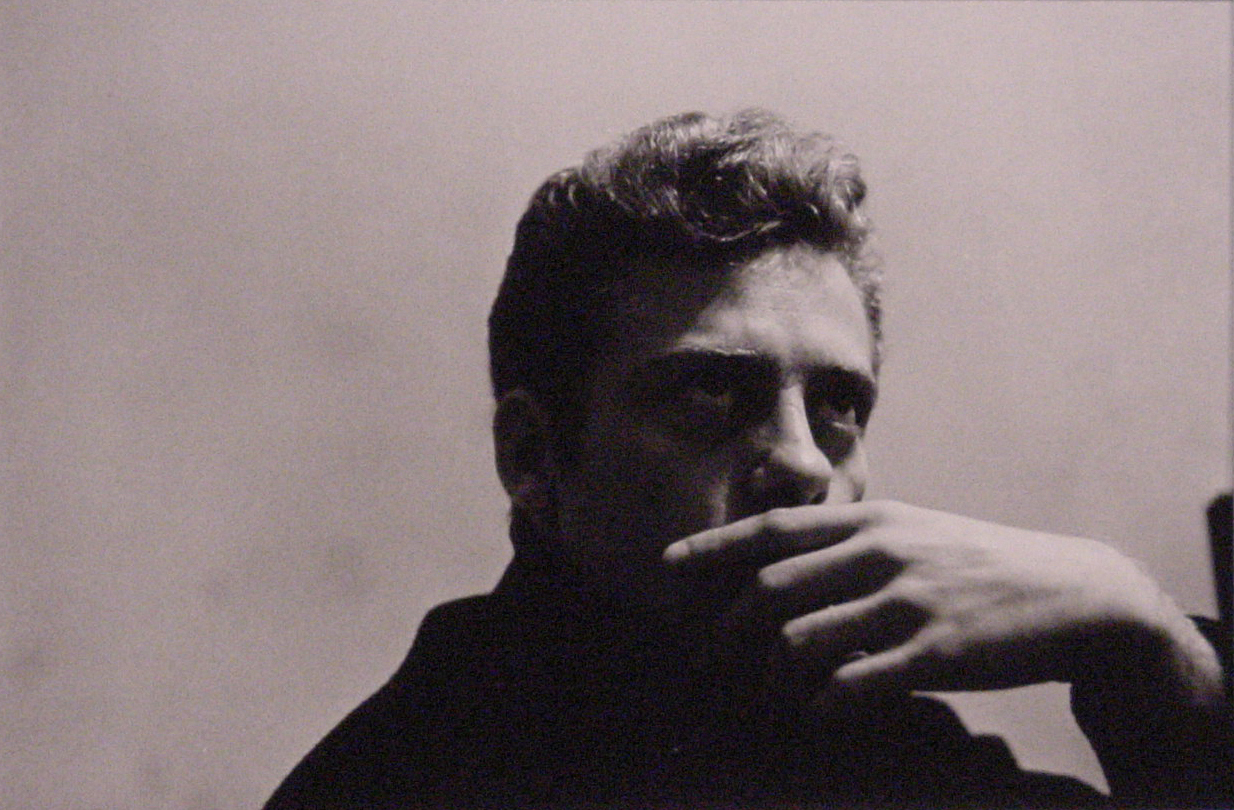 | Larry Clark Portrait of a man looking up, 1963-1971 Gelatin silver print on paper Gift of Jacki and Julian Taub 1986.13.15 This photograph perfectly captures the way we see each other, living with this pandemic. With only the eyes visible, the only way can understand each other through the emotions our eyes share. This creates a great contrast to the way we used to live pre-pandemic. – Noa Evenhaim, Political Science, Class of 2021 |
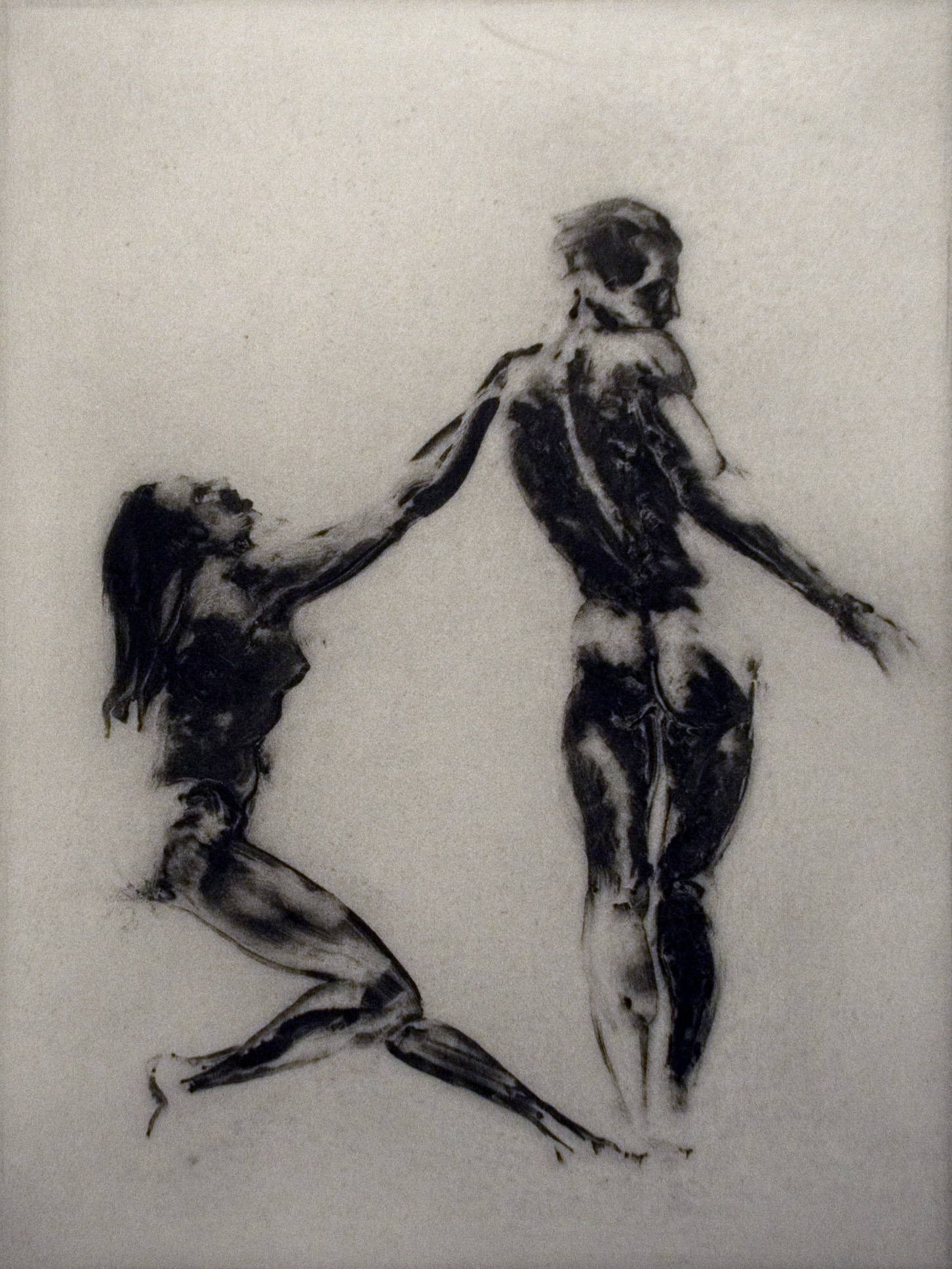 | Eric Fischl Untitled, 20th Century Etching and aquatint on paper 2008.56 Within “Untitled,” Fischl is depicting dark, fluid movement and interaction of the body. By using the etching and aquatint technique, lines are wide-ranging in tone and intensity. This piece serves as a depiction of experience, symbolizing mental emotions through human physicality. “I don’t think my work is so much about opening up wounds. I think it’s about understanding the nature of the wound. I’m not bleeding on the canvas. I, like most people, have suffered traumatic events. The character of a person’s life is determined by the way they deal with those events.” -Eric Fischl – Zoe Stupek; Markets Innovation and Design; 2023 |
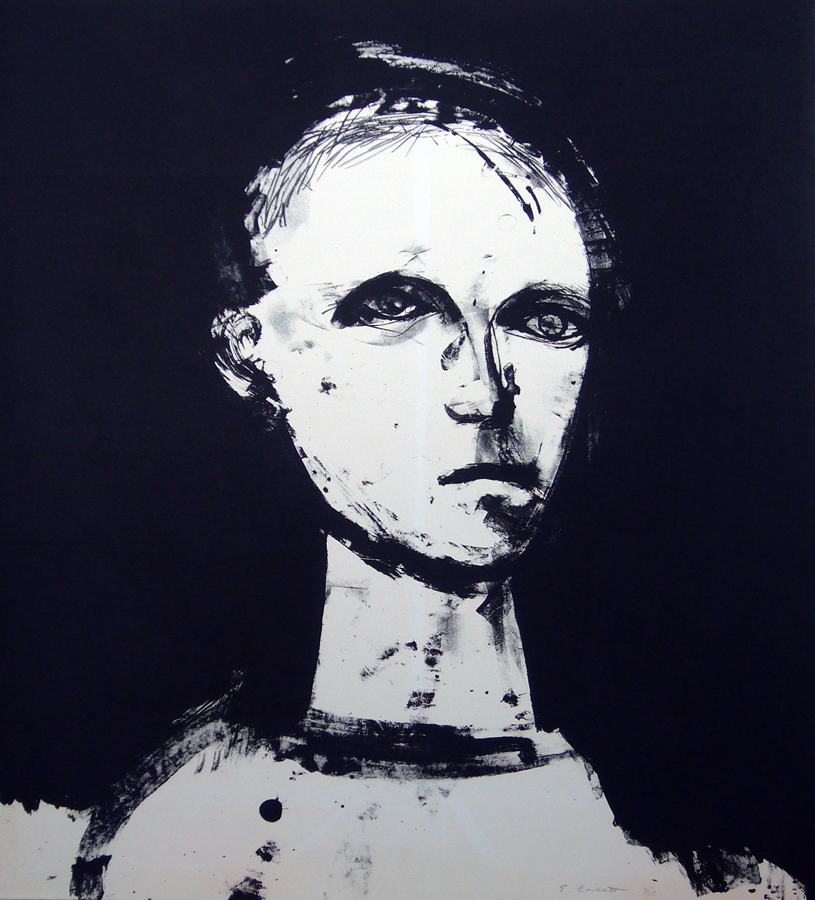 | Edward M. Corbett Untitled, 20th Century Lithograph on paper Gift of Virginia and Herbert Lust 1991.16.7 Known for abstract expressionism, Corbett uses intentional messiness to omit feeling. Rough borders and smeared face shape adds to the density of his work in “Untitled”. When viewing this piece, ask yourself how light and shadow affect the way you interpret emotions from others. Can our faces speak for our spirit? – Zoe Stupek; Markets Innovation and Design; 2023 |
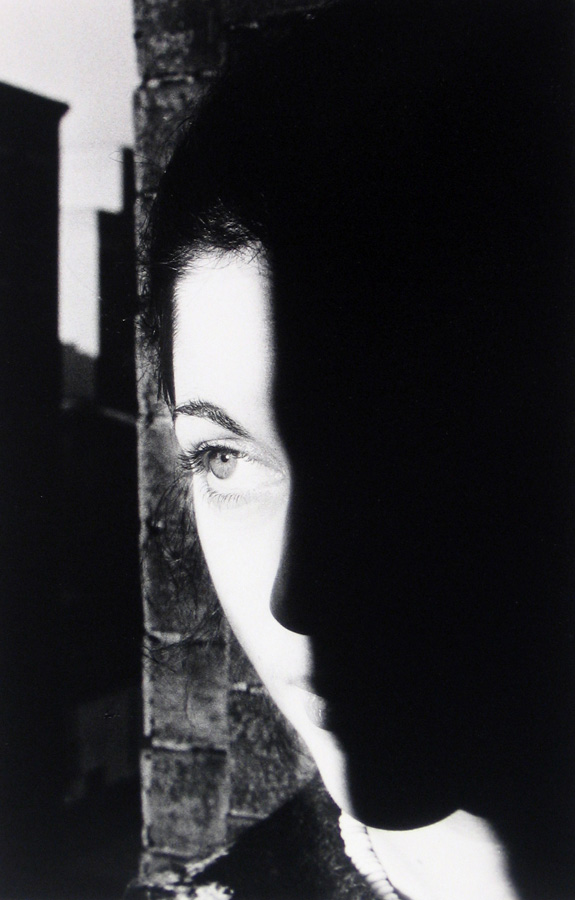 | Ralph Gibson Untitled, 1974 Gelatin silver print on paper Gift of Raymond Merritt 1982.17.13 This work is a selection of Ralph Gibson’s gallery. He focuses on taking black and white photographs of the human body, usually in the nude. This allows the photographs to strongly focus on and emphasize human features and emotion. There is a certain mystery behind this photograph as the subject shows a blank expression and it cannot be said as to what is going on in the environment around her. What do you think she’s feeling? – Alex Hong, Undeclared Major, Class of 2024 |
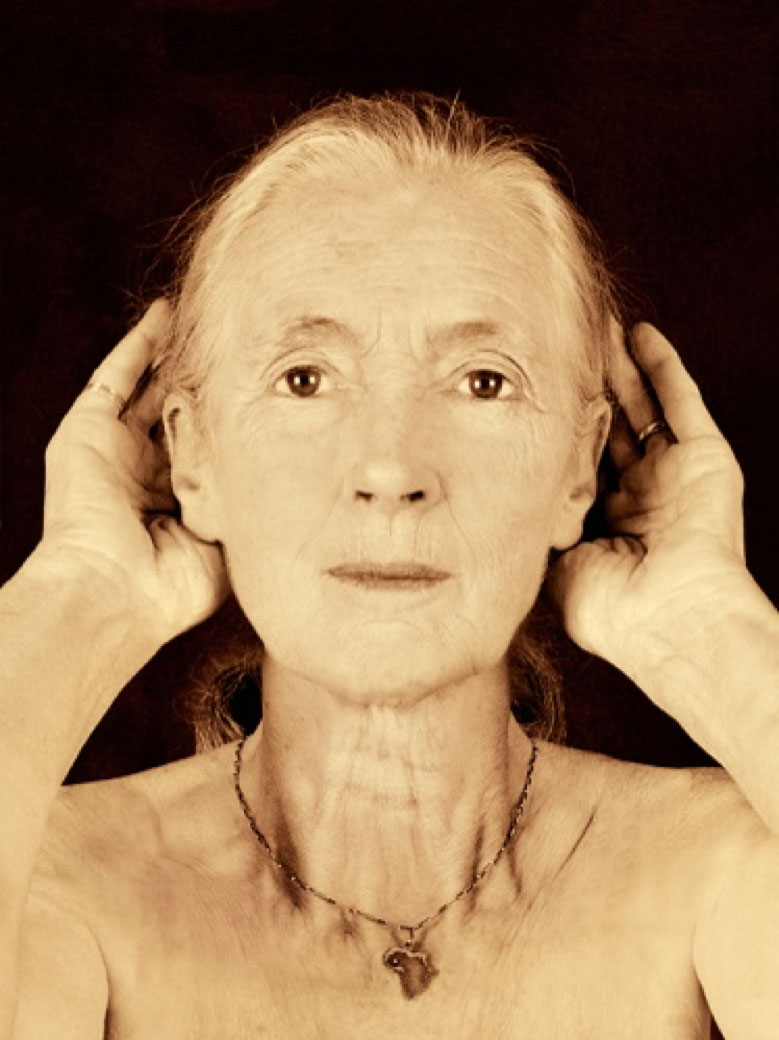 | Joyce Tenneson Jane Goodall, 67, 2000 Archival Pigment Print Gift by Douglas and Ellen Smith 2016.8.3 This work is a selection of Joyce Tenneson’s series “Wise Women,” a portfolio that uses nudity too redefine the role of women in society. This portrait of an older woman in the nude expresses a sense of confidence and strength and there is less mystery to her emotions. In today’s society, older citizens are in a time of risk and fear. However, this piece reflects on their ability to stand strong and take on any challenge they are faced with. – Alex Hong, Undeclared Major, Class of 2024 |
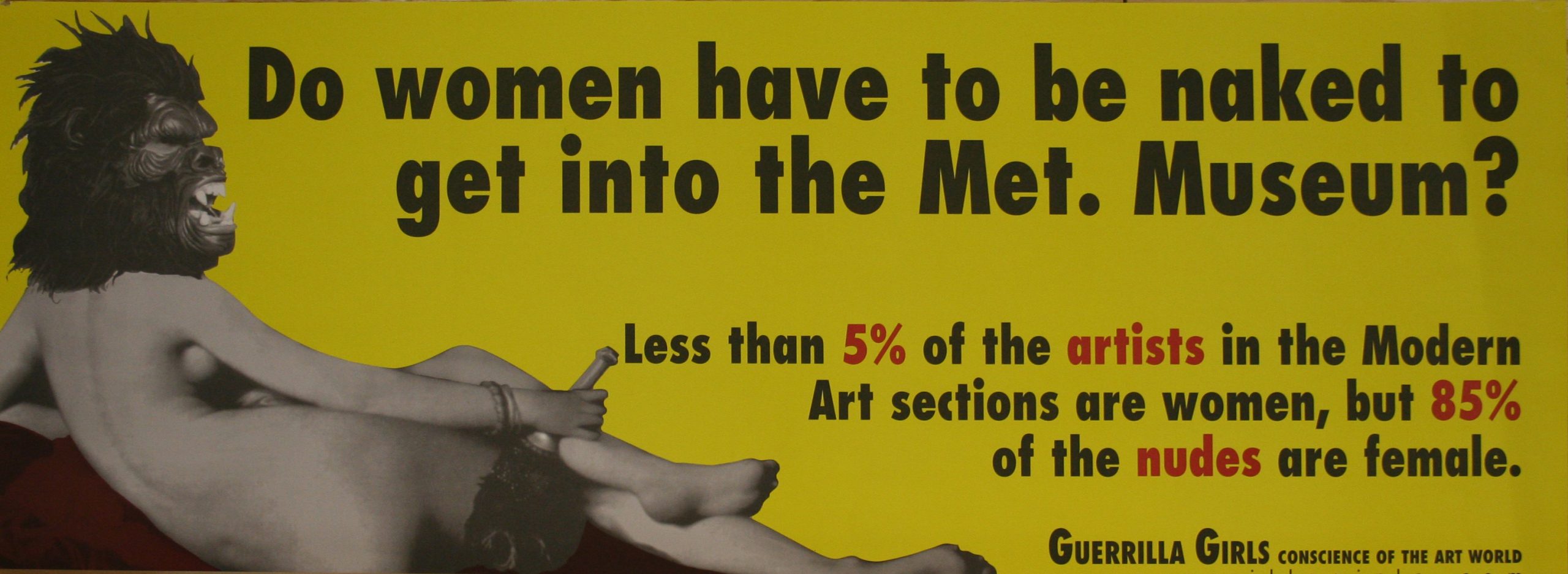 | Guerrilla Girls Do Women Have to Be Naked to Get Into the Met. Museum?, 20th Century Offset lithograph on paper 2000.1.3 What comes to mind when thinking about female characters within art history? The Guerrilla Girls are a group of feminist art activists who worked to expose the art community for its exclusionary acts. In the work, “Do Women Have to Be Naked to Get Into the Met. Museum,” the group presents a masked, nude woman in response to the sexism of museums’ limited incorporation of female artists, yet high proportion of female nudes. Although before the times of COVID-19, this work can be perceived through the lens of the pandemic where the focuses of the body have shifted, since facial expressions are primarily concealed due to face masks. – Caroline Fitzgerald, Markets, Innovation & Design, Class of 2021 |
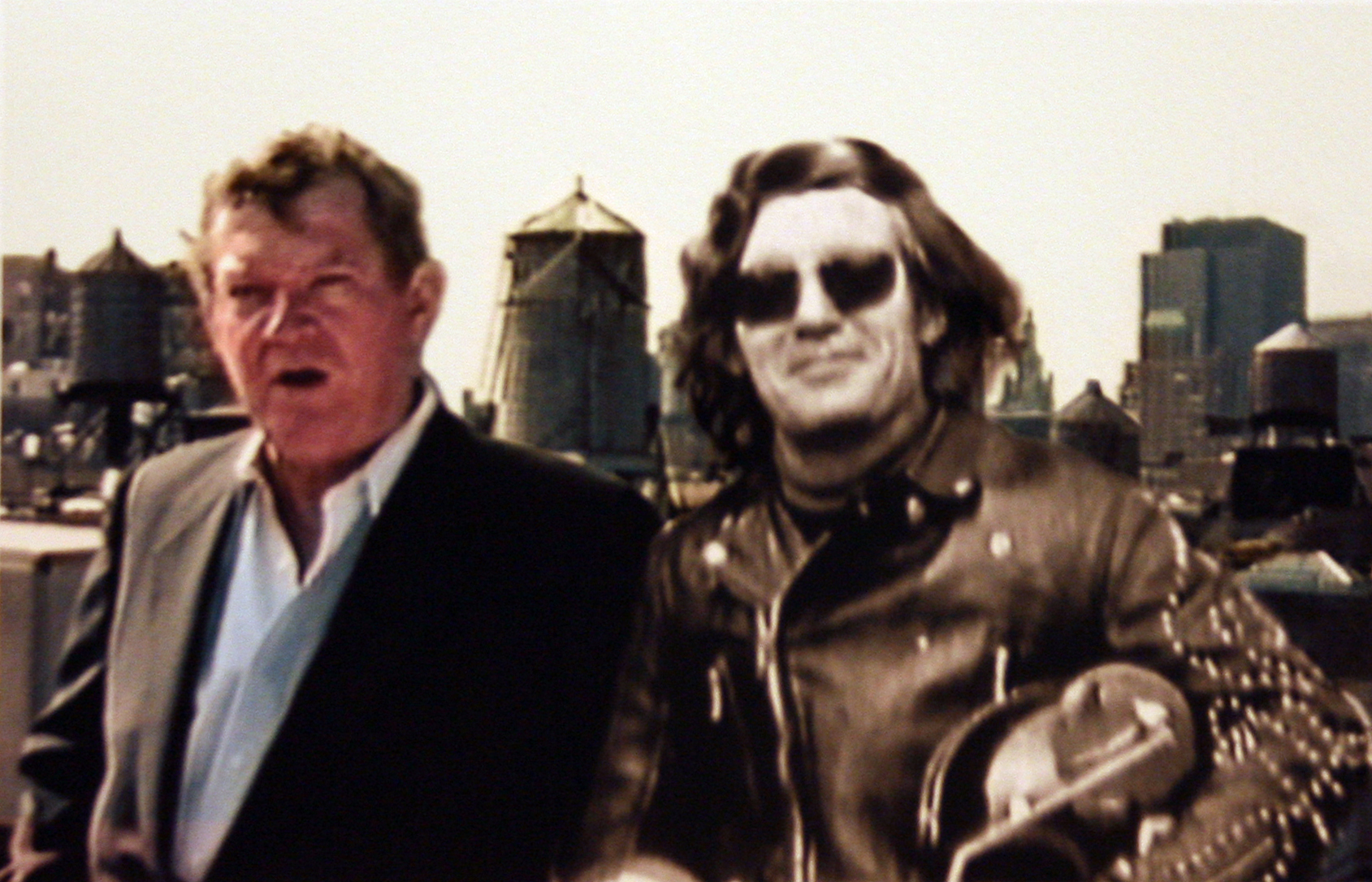 | Louise Bourgeois The Face of the Critic, 20th Century Iris print and hand-printed lithograph on paper 2007.43 From then to now, how have your expressions changed over the course of your life? In 1998, Louis Bourgeois, a French-American sculptor, painter, and printmaker, created this work for an event of the research center, the Archives of American Art. This artwork was commissioned to feature an honoré of the event: Robert Hughes. The two faces digitally placed within the composition of the work both appear to be Robert Hughes, though at different phases of his life. Though created different periods from many others within this exhibition, the portrayal of expressions from then to now of the critic’s life establishes a connection to the topic at hand. – Caroline Fitzgerald, Markets, Innovation & Design, Class of 2021 |
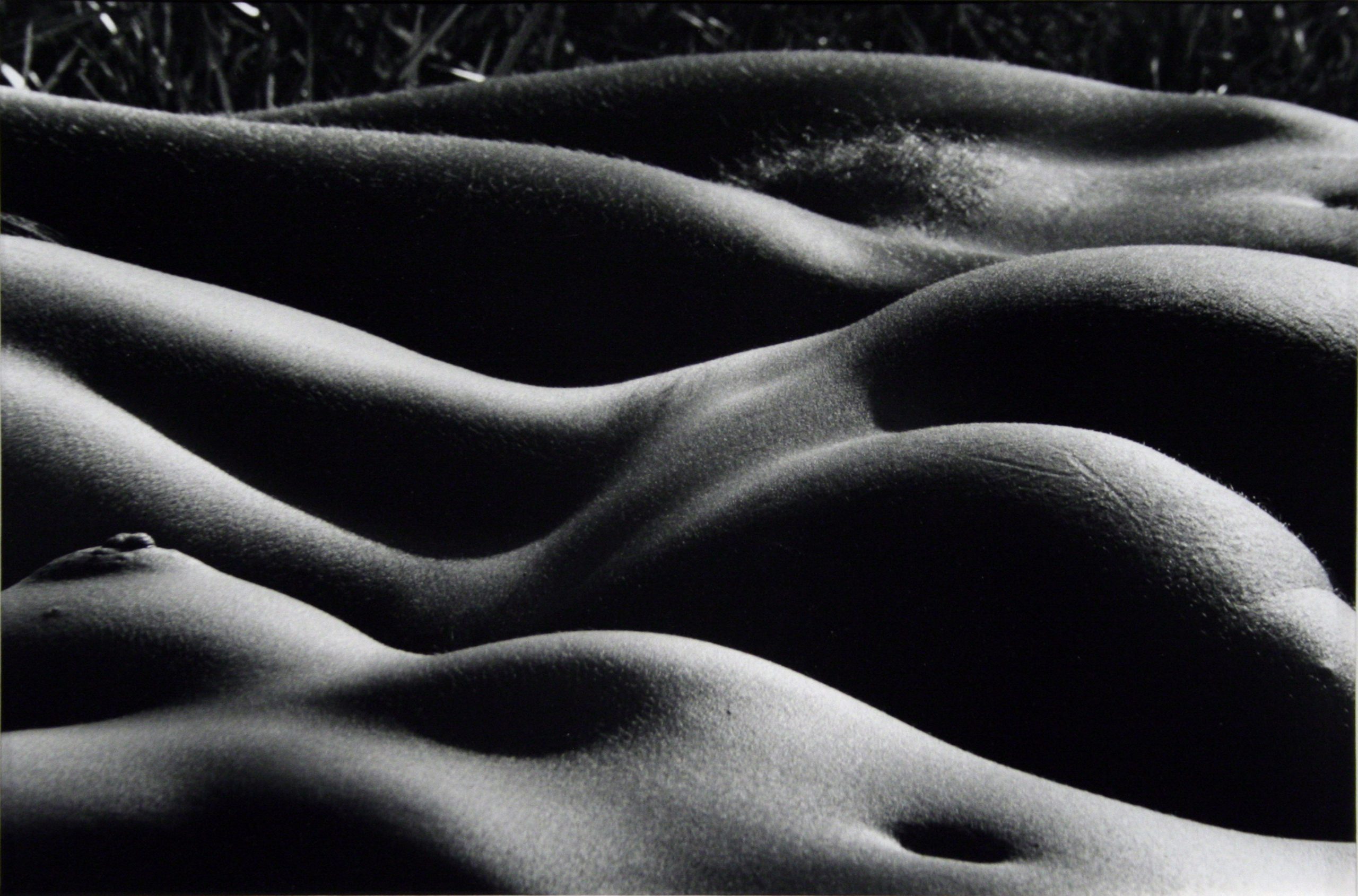 | Lucien Clergue 3 Nude Women, Italy, 1993 Gelatin silver print on paper Gift of Anne R. and Raymond W. Merritt ’83 2004.9.11 In this black and white photograph, Clergue utilizes the smooth curves of the female form to create a landscape-like image, thus acknowledging the raw beauty of nature and the body. Due to its aesthetic composition, he was able to elevate photography and the nude to a place of modern fine art that is equivalent with painting or drawing. – Kalista Kocinski, Major: Studio Art and Sociology, Minor: Art History, Class of 2021 |
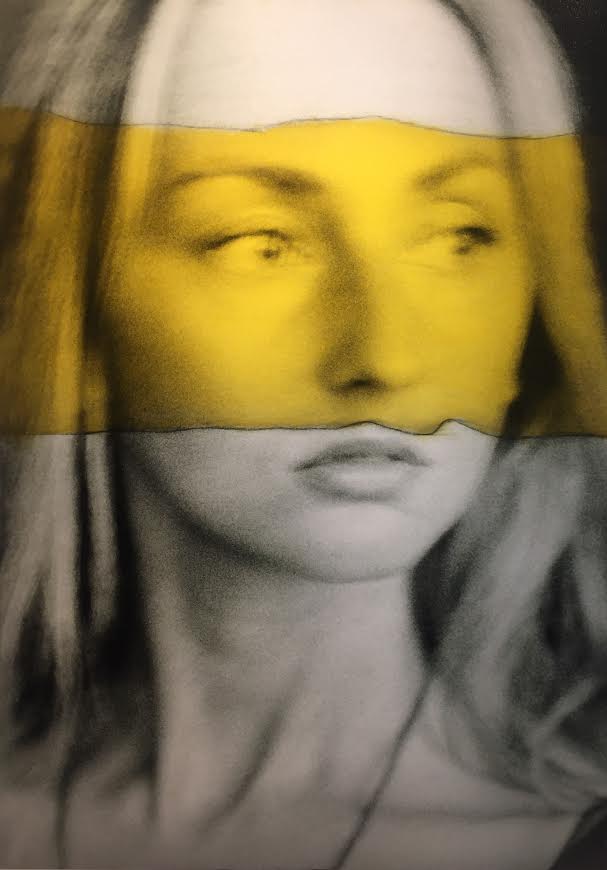 | David Seltzer Gabriella, 1999 (capture date), 2014 (print date) Archival Pigment Print Gift of Kevin and Delia Willsey 2016.11.14 Label: Originally a part of Seltzer’s Knowledge of the Raw, the blurry and grainy quality of this photograph embraces the woman’s natural facial features without edits or filters. The transparent yellow layer creates a boundary between the subject and the audience and appears almost as a mask, while also highlighting the expression in her eyes. – Kalista Kocinski, Major: Studio Art and Sociology, Minor: Art History, Class of 2021 |
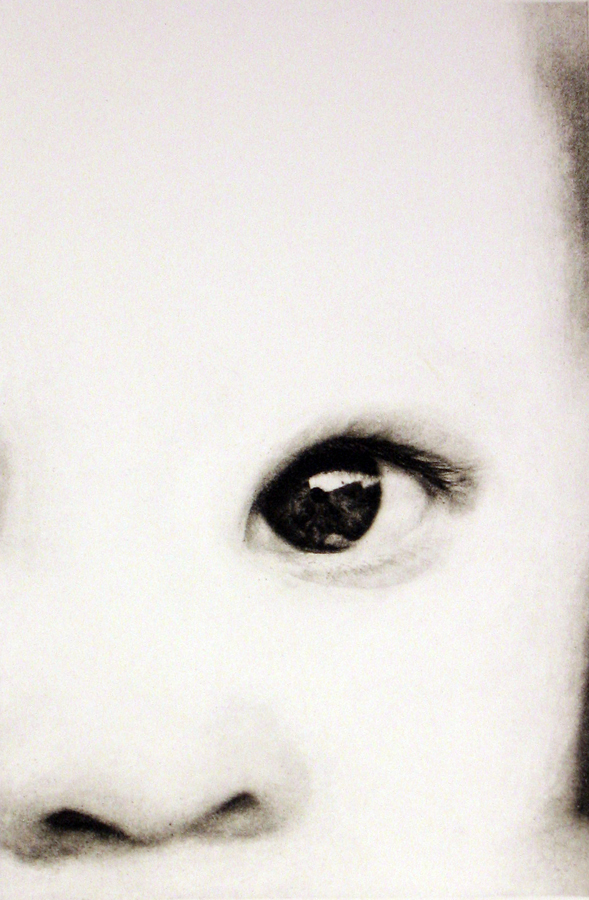 | Ralph Gibson Untitled from Infanta, 1939 Photogravure on paper 1998.4.5 Ralph Gibson tested new boundaries of photography by intensifying contrasts, concentrating on minute details, and suggesting juxtaposition in his stills. This photograph by Gibson seems to pull our attention to the dark and dense eye in the middle of the pale white face of the infant. The eye, being the place we see and interpret the world through, holds a lot of information about a person, however the baby depicted in this photograph has not been alive long enough to have seen major events in his life so what do you believe is the motive behind the artist’s attention to the infant eye versus the adult eye? – Caio Jordao, English – Film/Media Studies, Class of 2021 |
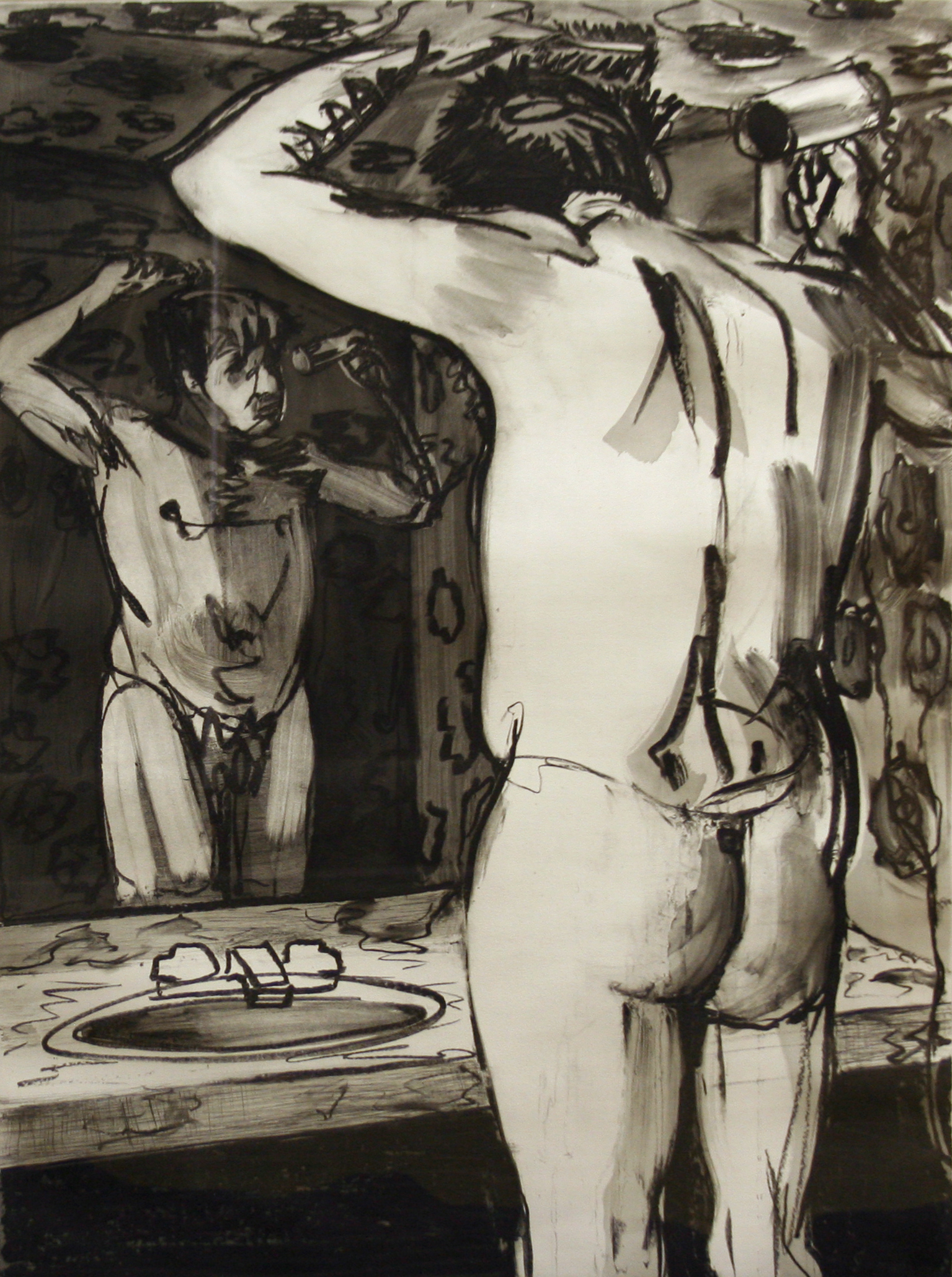 | Mike Glier Men at home: Grooming, 20th Century Etching on Paper 1986.9.4 Mike Glier’s Men At Home: Grooming suggests a mood that has been very applicable this past year. With quarantining and stay-at-home orders, people became overwhelmed with being locked inside, and with the fast strokes and sketchy look that this work has it seems to suggest a sense of tension and feeling overwhelmed at home. Along with the multitude of emotions that this work provokes, it’s center piece is still the nude human body standing in front of the mirror looking at itself; what is this nude man thinking about that is giving this room the tense and uneasy aura that it has? – Caio Jordao, English – Film/Media Studies, Class of 2021 |
Installation Images:
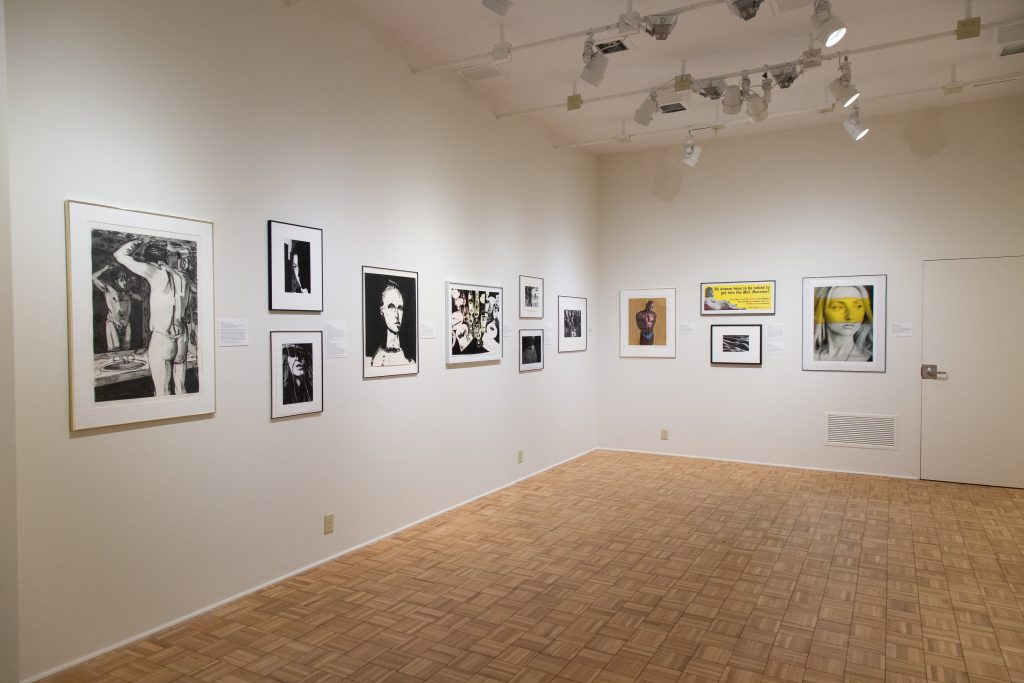
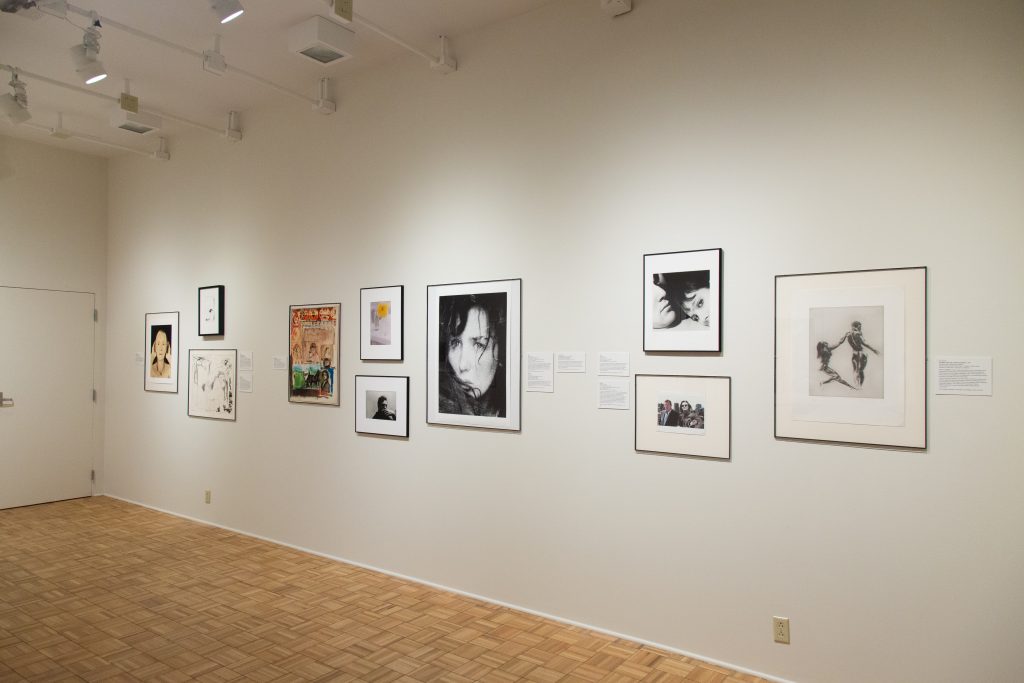
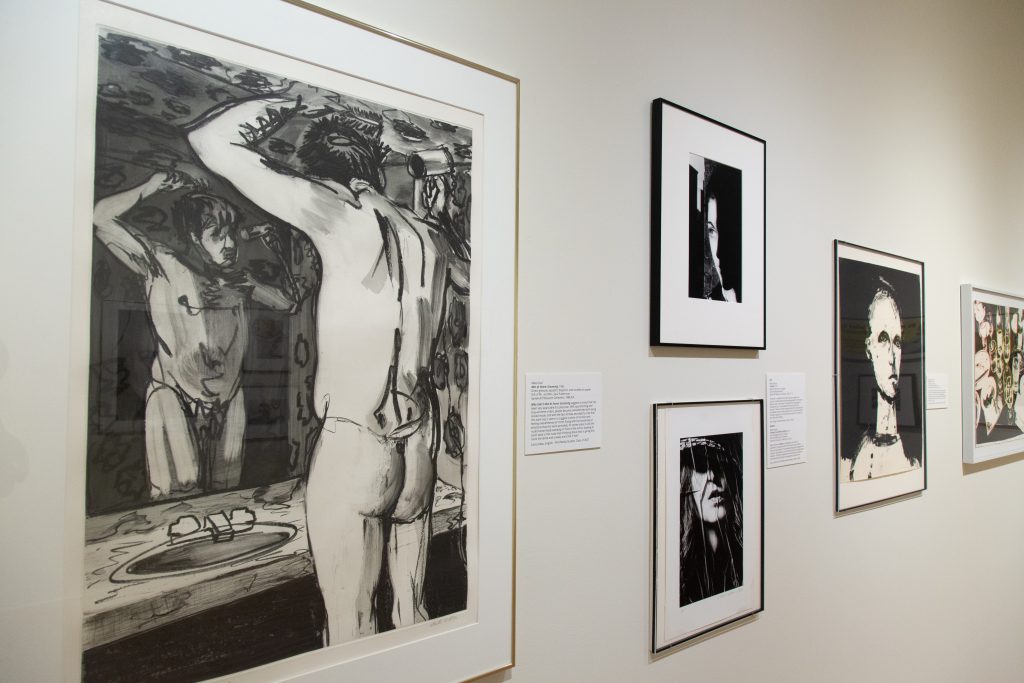

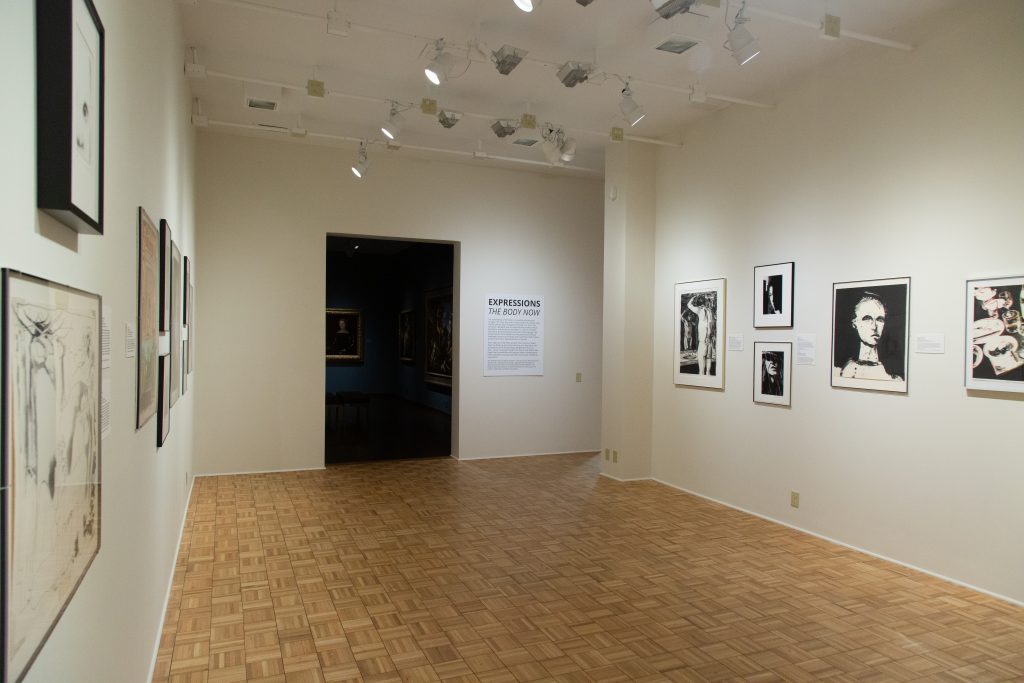
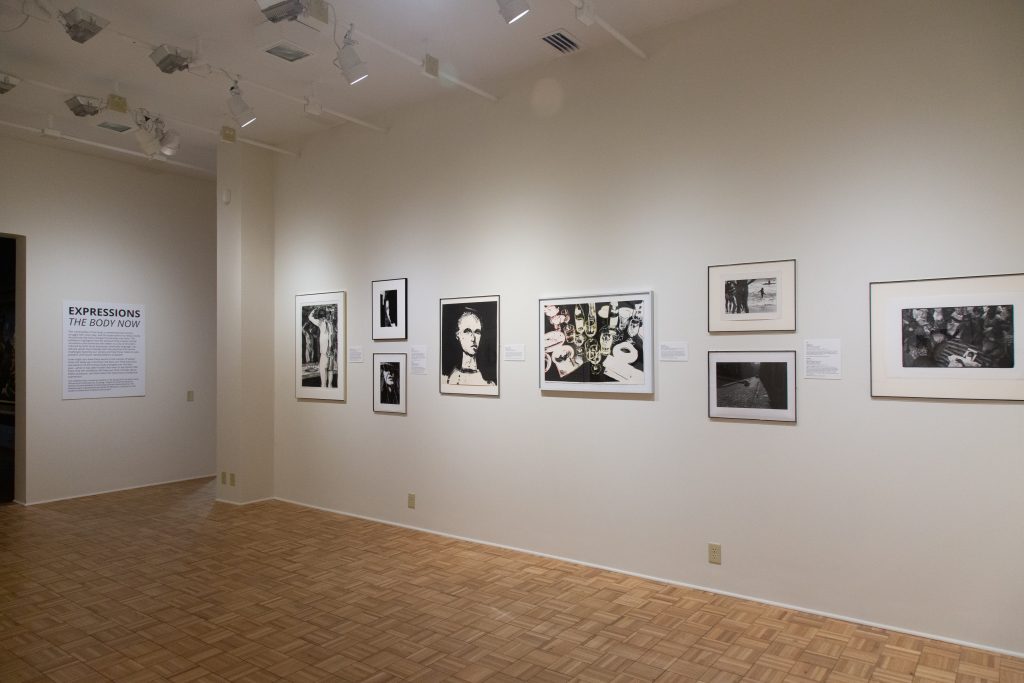
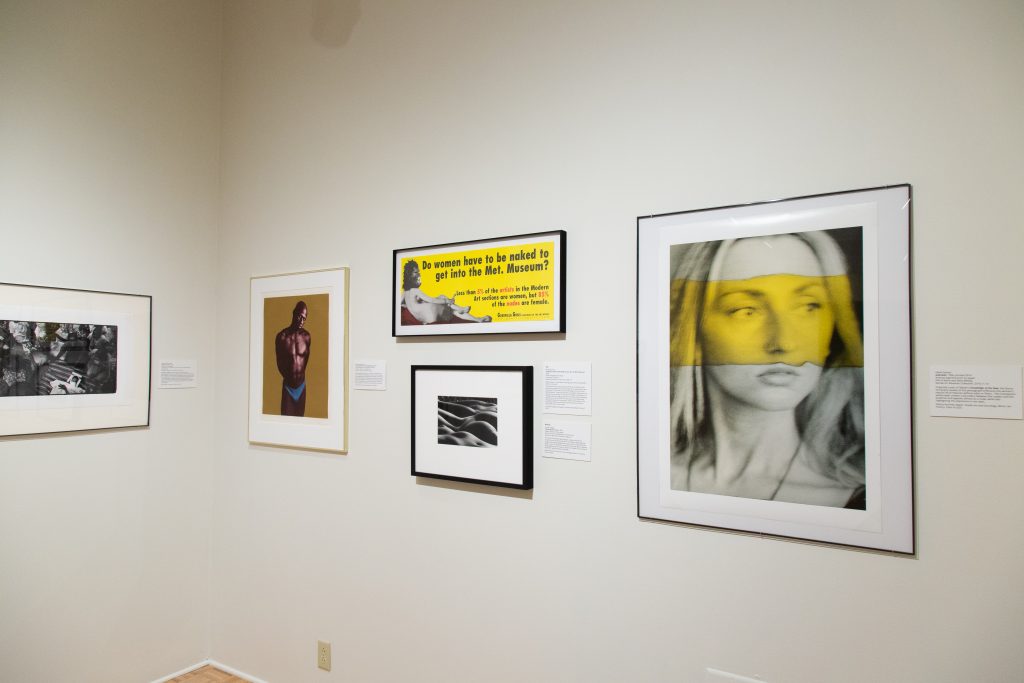


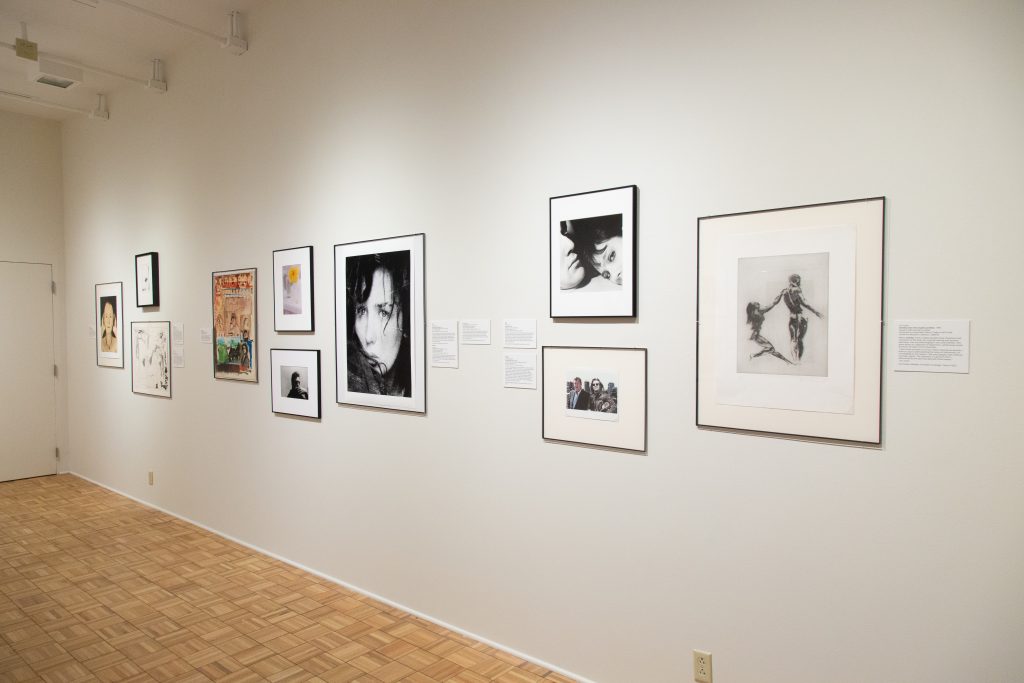
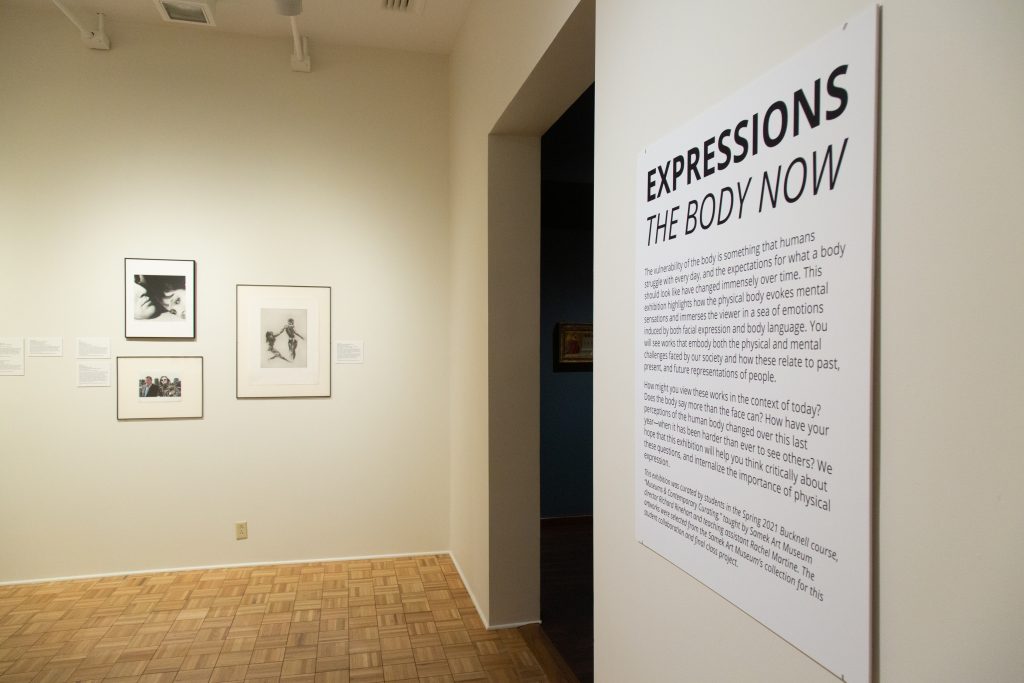
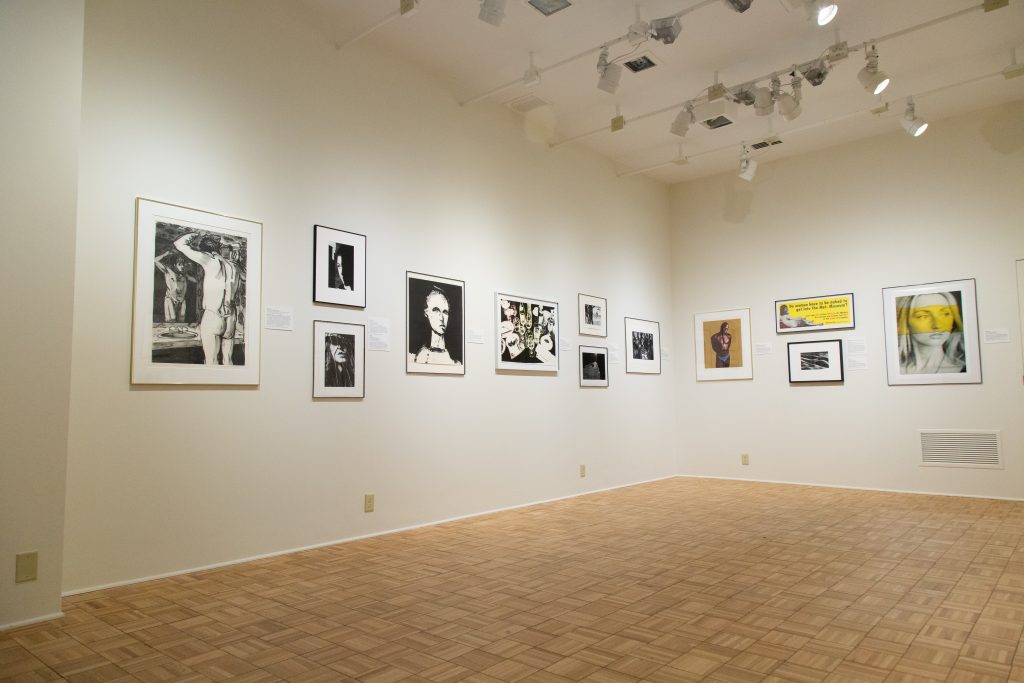
Top image credit: Edward M. Corbett, Untitled, 20th Century, Lithograph on paper

